This was published 4 years ago
Fighting extinction: What you can do to help endangered animals
By Sue Williams
Catching a glimpse of a tiger in an Indian forest. Watching an orang-utan snap off a tree branch to use as a scratching stick. Seeing a black rhino nuzzle its young. They're all astonishing sights available to travellers today, but which we're all sickeningly aware might not be there for our children or grandchildren.
With the latest UN-backed report revealing that 1 million of the world's species are now under threat of extinction, the future can look bleak. But going to see those animals while we still can may hold the key to their long-term survival, say the experts.
"Eco-tourism can be a critical tool in conservation because it provides a sustainable income stream to local communities and shows them that these animals are worth more to them alive than dead," says Cameron Kerr, the director and chief executive of Taronga Conservation Society Australia.
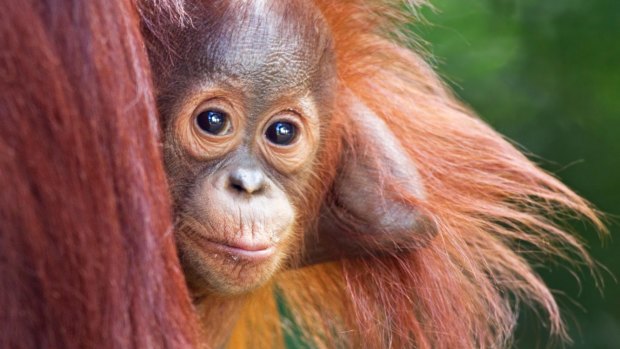
A baby orangutan peers from behind his mother in Borneo.Credit: Alamy
"Eco-tourism can also be very labour-intensive and the work it provides helps people have pride in themselves and their culture and ways of living. It's an important factor in helping protect wildlife, and seeing these animals builds empathy and changes people's behaviour. We absolutely relate to wildlife, it's in our genes."
Saving endangered animals from extinction is all about winning hearts and minds, then acting strategically to arrest the decline in numbers, usually caused by poaching, being hunted for meat, deforestation, poisoning of the ecosystem or global warming. Then there's work to be done to preserve natural habitats and repopulate the ecosystem.
That mission has acquired a fresh urgency with the new UN-Intergovernmental Science-Policy Platform on Biodiversity and Ecosystem Services Global Assessment Report released last month. It was compiled by 145 experts from 50 countries over three years. It found that more animal and plant species are threatened with extinction than ever before in human history.
"Biodiversity and nature's contributions to people are our common heritage and humanity's most important life-supporting safety net," says report co-chair Professor Sandra Diaz. "But our safety net is stretched almost to breaking point."
It's a warning we're receiving from award-winning naturalist Sir David Attenborough, too. He charmed us all for decades with his mesmerising documentaries about the splendour of the world's creatures, but is now using his standing to show us how critically they're endangered.
Darren Grover, the head of living ecosystems at the World Wildlife Fund, says Attenborough's passion is infectious. "He used Our Planet to really show us the stories of the threats to wildlife as well as how beautiful it is," he says. "And we should be alarmed. So many species are in grave danger and we know what the answers are and we have to have the motivation to do what needs to be done.
"While it's wonderful to see those documentaries too, there's nothing like actually seeing animals ourselves. A couple of years ago, I saw a tiger in the wild which was breathtaking, and an experience that will stay with me for the rest of my life. Seeing those animals can make a huge difference to our lives."
Australia has a particularly poor record in protecting wildlife, with hundreds of species disappearing since European settlement. Now, with one in three of our unique mammals at risk – and that's not even considering the controversial black-throated finch at the centre of the Adani mine controversy – it's even more important that we get out and about to see them, says James Fitzsimons, director of conservation at the Nature Conservancy Australia.
"There's so much that needs to be done to conserve our species whether by offering financial incentives, increased funding or buying new reserves," he says. "It's great for people to go out and see them, and then really feel the urgency of helping."
MOUNTAIN GORILLAS AND CROSS RIVER GORILLAS
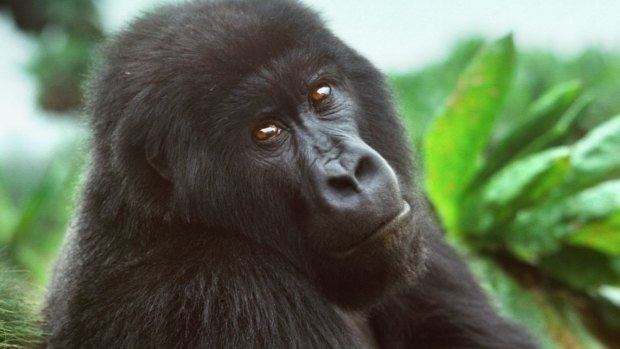
Credit: Alamy
THE HABITATS
Mountain gorillas live in forests high in the mountains of Rwanda, Uganda and the Democratic Republic of Congo, and Cross River Gorillas in Nigeria and Cameroon.
STATUS
There are only 900 mountain gorillas left in the wild and, at most, 300 Cross River gorillas. The International Union for Conservation of Nature's (IUCN) Red List of Threatened Species classifies them as endangered as a result of habitat loss, hunting, civil conflict and disease.
HOW AND WHERE TO SEE THEM
Strictly controlled small-group gorilla-trekking safaris can run throughout the year in Uganda and Rwanda, with the Classic Safari Company one of the top operators.
WHAT ELSE YOU CAN DO
Make a contribution to the Dian Fossey Gorilla Fund (see gorillafund.org); recycle old mobile phones and electronics to reduce the demand for metals mined in gorilla areas; and check products don't contain palm oil.
THE DETAILS
The most popular time for seeing gorillas is between December and February, and June to September when it is drier. See classicsafaricompany.com.au
SUMATRAN TIGERS
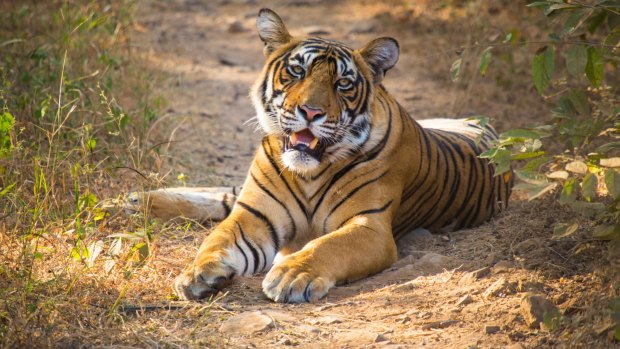
Credit: Alamy
THE HABITATS
They live in the small remaining patches of forest on the Indonesian island of Sumatra.
STATUS
With heavy black stripes on their orange coats, this smallest of the tiger species has been hunted ruthlessly and now fewer than 400 remain in the wild, with deforestation a further huge threat. They're now critically endangered.
HOW AND WHERE TO SEE THEM
Kerinci Seblat National Park on Sumatra has the highest population of tigers on the island at up to 190 animals and is acclaimed by the Global Tiger Initiative as a protected area with important work being done for conservation. Trekking offers the only hope of seeing them, but they are shy and nocturnal, so sightings can be rare.
WHAT ELSE YOU CAN DO
Make a donation to the International Tiger Project (see tiger.org.au) which funds Wildlife Protection Units, training local people as rangers to protect the tigers, stop illegal logging and keep data on numbers.
THE DETAILS
Lonely Planet has declared Wild Sumatra Adventures as the most conservation-minded trek operator in the area, ploughing five per cent of its funds back into tiger protection. See wildsumatra.com
HAWKSBILL SEA TURTLES
THE HABITATS
This small turtle lives in the warm tropical coastline waters of the Pacific and Indian Ocean.
STATUS
It's the most endangered species of turtle and in the top 10 of creatures at risk worldwide, with perhaps only about 8000 turtles left. They're been hunted for years for their beautifully patterned "tortoiseshell" shells, which are turned into jewellery and ornaments. Natural predators and climate change are also significant threats.
HOW AND WHERE TO SEE THEM
The Kimberley region of Western Australia is known to have a good population, with nesting occurring mostly from October to January. They can be difficult to see but guides are trained at spotting them in the water and on the sandy beaches of the coastline. The best way is to take a Kimberley cruise.
WHAT ELSE YOU CAN DO
Donate to the Sea Turtle Foundation (see facebook.com/SeaTurtleFoundation) set up to support vital research into turtle populations, educating communities about what can be done to help and taking direct action against threats in Australia and the Indo-Pacific region.
THE DETAILS
Take a Kimberley cruise with a company like APT which has a series of guides and wildlife experts, skilled at spotting turtles and dedicated to preserving the pristine environment. See aptouring.com.au
GIANT PANDAS
THE HABITATS
This black-and-white bear, the symbol of the World Wildlife Fund (WWF), lives mostly in bamboo forests in the mountains of western China.
STATUS
Its status is "vulnerable" with just over 1800 pandas thought to be living in the wild. The pandas' primary habitat, the Yangtze Basin region, is at the centre of China's economic boom, with roads and railways encroaching on the forests and disrupting mating patterns.
HOW AND WHERE TO SEE THEM
The Chinese government has established more than 50 panda reserves, and the best place to see them is at Dujiangyan Panda Base an hour's drive north of Chengdu, and the nearby Panda Conservation Centre, where travellers can see the feeding of the younger cubs.
WHAT ELSE YOU CAN DO
Become a Panda Ambassador with the WWF, and play an active role in local and global initiatives the organisation undertakes, with education symposiums, fundraising drives and helping raise awareness of the issues.
THE DETAILS
Book a Wendy Wu China tour that includes visits to see giant pandas. See wendywutours.com.au
BLACK RHINOS
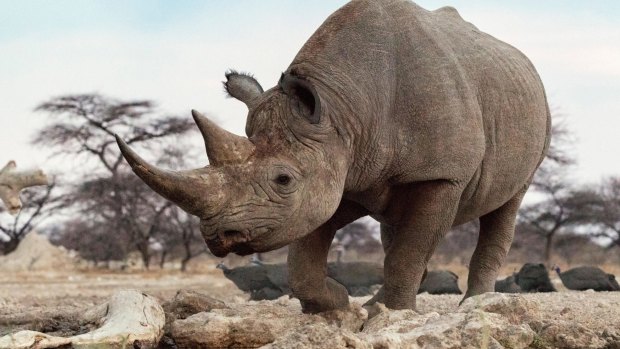
Credit: Alamy
THE HABITATS
This vegetarian species lives in savannah and woodland areas of southern and eastern Africa: South Africa, Zimbabwe, Namibia, Kenya and Tanzania.
STATUS
Black rhinos are classified by the IUCN as critically endangered, with three subspecies declared extinct in 2011, and only about 5000 black rhino left in the wild after 96 per cent of the population was wiped out by poachers between 1960 and 1995. Demand for illegally trafficked rhino horn remains particularly high in Asia, where it is considered a status symbol and an ingredient in bogus medicinal uses. Anti-poaching measures are now seeing the population lift slightly.
HOW AND WHERE TO SEE THEM
There are several conservation projects in wildlife areas of Africa, with safaris through the regions. The greatest numbers are in South Africa and Kenya.
WHAT ELSE YOU CAN DO
Never buy rhino horn or anything made from rhino horn and write to the Australian government asking them to lobby China to re-impose the ban they recently lifted on using horn for traditional medicine. Sign up to the WWF's Adopt A Rhino program to help its efforts stopping poaching and preserving the species. See worldwildlife.org
THE DETAILS
Book an African safari through a reputable company such as Bench Africa. See benchafrica.com
BORNEAN AND SUMATRAN ORANG-UTANS
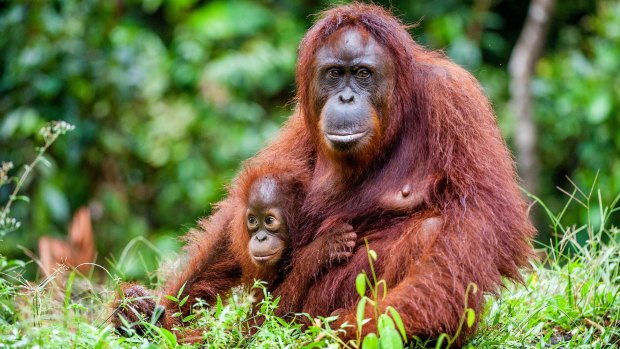
Credit: Alamy
THE HABITATS
These two species of tree-dwelling animals are solitary, known for their intelligence – even making simple tools – and forage in the forests of Borneo and Sumatra.
STATUS
Once found throughout south-east Asia, they're now confined to two islands, with their numbers more than halved over the past 60 years because of humans advancing into their forests and poaching them for their meat and to be used as pets. They're now both considered highly endangered.
HOW AND WHERE TO SEE THEM
One of the best places is at Borneo's Tanjung Puting National Park and its orang-utan sanctuary, Camp Leakey, which works with the animals in their natural habitat. Cruise line Silversea has partnered Camp Leakey and takes guests on cruises around the region to the camp.
WHAT ELSE YOU CAN DO
Through the Orangutan Foundation International, become an orang-utan foster parent and help care for displaced and orphaned orang-utans during their rehabilitation back into the wild. See orangutan.org
THE DETAILS
Check out Silversea Cruises for their next voyage. See silversea.com
POLAR BEARS
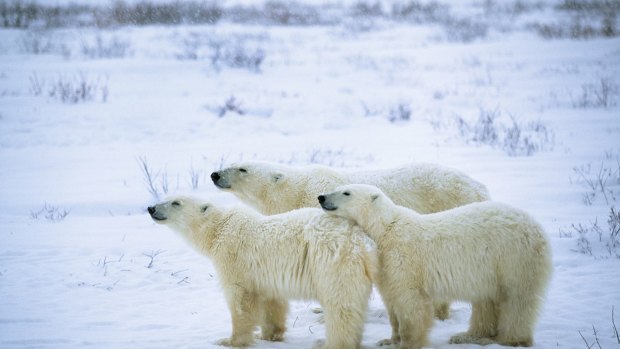
Credit: Alamy
THE HABITATS
The floating sea ice of the Arctic, with the mammals being good swimmers who spend 50 per cent of their time hunting for food – their favourite tidbits being seals.
STATUS
With their habit in dire straits through global warming melting the ice, they were listed as a threatened species in 2008 and are now considered to be vulnerable with a dramatically reduced population possibly as low as 22,000.
HOW AND WHERE TO SEE THEM
An Arctic cruise is the best way to see polar bears, with an operator such as Scenic which uses Zodiacs and kayaks to travel close to ice floes to see the bears.
WHAT ELSE YOU CAN DO
A significant cause of climate change is the emission of polluting gases from burning fossil fuels so, individually, we could use our cars less, rug up in winter rather use heating, and use energy-efficient appliances, as well as lobbying government to adhere to emission reduction targets.
THE DETAILS
Scenic operates the ship Scenic Eclipse that can cruise into tiny harbours and through fiords. See scenic.com.au
GIANT TORTOISES
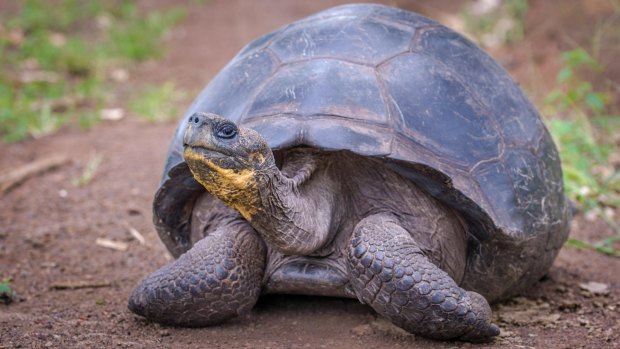
Credit: Alamy
THE HABITATS
Giant tortoises, the largest living tortoises in the world, are found on the Galapagos Islands off Ecuador in South America, where they feed on fruit, grasses, leaves and vines sometimes till up to 200 years of age.
STATUS
They're now listed as vulnerable after hunting them for food, their shells and for the oil that can be harvested from them nearly wiped them out in the early days. These days, their eggs are often threatened by introduced species like cats, rats, dogs and pigs and it's estimated that only about 15,000 remain. "Lonesome George", the world-famous single surviving tortoise from Pinta Island in the north of the Galapagos, died in 2012 after all efforts to find him a mate failed. That sub-species is now extinct.
HOW AND WHERE TO SEE THEM
Visiting the Galapagos Islands is a sure-fire way to see them as, once sighted, they, of course, move very slowly. World Expeditions runs a hike, bike and kayak trip around the islands, after a flight from Quito or Guayaquil.
WHAT ELSE YOU CAN DO
Adopt a giant tortoise through the WWF and receive a plush toy to remind you of your charge, and a photo of your adoptee.
THE DETAILS
World Expeditions has regular trips to the Galapagos. See worldexpeditions.com
SNOW LEOPARDS
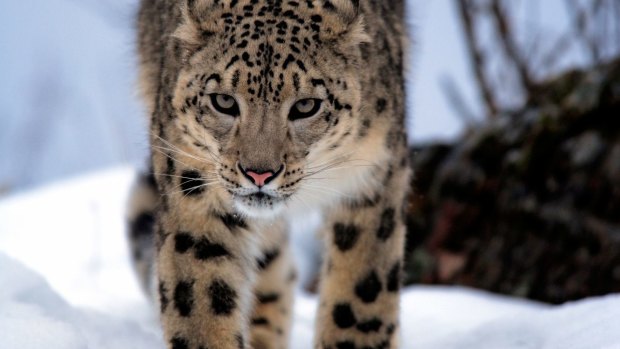
Credit: Alamy
THE HABITATS
Snow leopards like steep rugged terrain with cliffs and gullies, and can be found in the mountains of Afghanistan, Bhutan, China, India, Kyrgyzstan, Kazakhstan, Nepal, Mongolia, Pakistan, Russia, Tajikistan, Uzbekistan and Myanmar.
STATUS
They're endangered with only about 4000 thought to exist in the wild. They've been poached or killed by livestock shepherds worried about their herds, and there's also been a shortage of prey.
HOW AND WHERE TO SEE THEM
Intrepid runs tours to the wild west of Mongolia, where snow leopards live. They're elusive and tricky to spot, but you might be lucky.
WHAT ELSE YOU CAN DO
Help fund a project to help snow leopards through the Snow Leopard Trust, like supporting small grassroots conservation projects initiated and managed by herders in Mongolia. See snowleopard.org
THE DETAILS
Intrepid's 15-day Mongolia expedition starts and ends in Ulaanbaatar, around lakes, mountains, nomads, ibex, eagle hunters …. And maybe snow leopards. See intrepidtravel.com
KOALAS
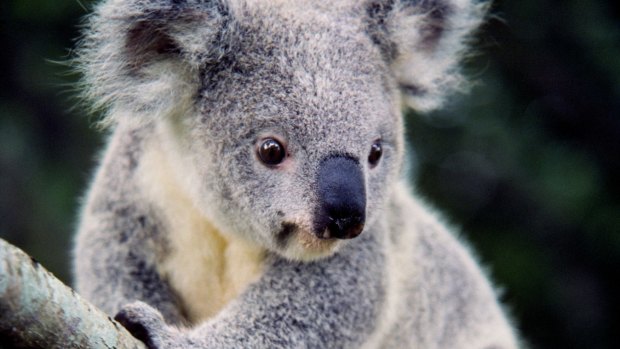
Credit: Alamy
THE HABITATS
Koalas live in low woodland, in tall eucalypt forests or on coastal islands where their favourite types of gum leaves grow. They're found today in NSW, the ACT, Queensland, Victoria and South Australia.
STATUS
They're officially classified as "vulnerable" everywhere but Victoria and South Australia, because of tree-clearing habitat destruction, domestic dog attacks, bushfires, road accidents and diseases such as chlamydia. The Australian Koala Foundation (see savethekoala.com) believes there are now as few as 43,000 in the wild, and their status should be upgraded to "critically endangered" in south-east Queensland as the government has declared them to be "functionally extinct" there. The WWF says they could be extinct in NSW, too, by 2050.
HOW AND WHERE TO SEE THEM
There are koala sanctuaries all around Australia, including the Hidden Vale Wildlife Centre in Grandchester, an hour's drive west of Brisbane. The centre is conducting a 12-month koala research program and is part of the luxury Spicers Retreats group.
HOW YOU CAN HELP
At Hidden Vale you can assist researchers in locating and checking the welfare of the koala community. Elsewhere, you can join the foundation's Koala Army, donating to the koala's protection, starting a media campaign to alert others to their plight, and lobbying your MP.
THE DETAILS
Book in advance for the two-hour Hidden Vale expedition Tuesdays to Fridays at 2.30pm, costing $75 a person with 75 per cent going to the research project. See spicersretreats.com/retreats/spicers-hidden-vale
FIVE SPECIES THAT HAVE BEEN SAVED
THE ARABIAN ORYX, MIDDLE EAST
The Arabian oryx was originally hunted to extinction in the wild, but there are nearly 1000 back in the wild after Phoenix Zoo undertook a breeding program with its captive population.
THE SOUTHERN RIGHT WHALE, AUSTRALIA
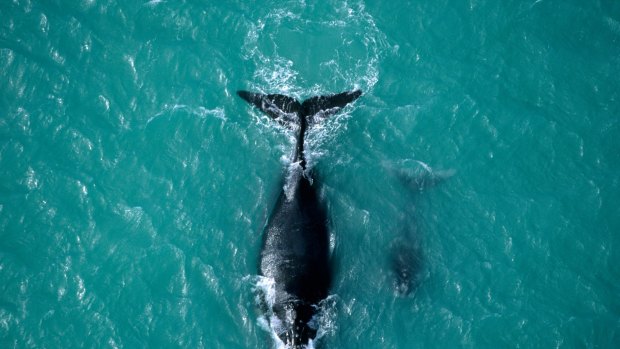
Credit: Alamy
The southern right whale was nearly extinct by the middle of the 19th century because of the whaling industry but since the 1986 moratorium on commercial whaling, its population has increased dramatically, and they now appear regularly off the Australian coast.
SOUTHERN WHITE RHINOS, AFRICA
Southern white rhinos were once thought to be extinct, but now have a population of more than 20,000, thanks to conservation campaigns in Kenya, Namibia, South Africa, and Zimbabwe.
THE CORROBOREE FROG, AUSTRALIA
The corroboree frog was almost wiped out by a virulent fungus but zoos such as Taronga in Sydney have bred big numbers and relocated them to disease-free environments.
THE GRIZZLY BEAR, NORTH AMERICA
The grizzly bear was once in dire straits due to hunting, a loss of habitat, hunting and low birth rates. In Yellowstone National Park, where they are one of the most iconic species, numbers are up to about 600, with a further 55,000 throughout the US and Alaska.
TEN MORE SPECIES TO SEE BEFORE IT'S TOO LATE
AMUR LEOPARDS, RUSSIA
Amur leopards live in the forests of the Russian Far East and are on the brink of extinction with fewer than 70 left in the wild, due to poaching, losing habitat and in-breeding. Two cubs were born last year at the Royal Zoological Society of Scotland's Highland Wildlife Park; they will later be released into the wild. See rzss.org.uk
BLACK-FLANKED ROCK WALLABIES, AUSTRALIA
These marsupials live on rocky outcrops around Western Australia's mid-west and were believed to be extinct because of feral predators and overgrazing. But they're now making a comeback after a number were transported to the state's Kalbarri National Park 150 kilometres north of Geraldton, where there's now thought to be 100. See parks.dpaw.wa.gov.au
PANGOLINS, ASIA AND AFRICA
Pangolins, or scaly anteaters, are found in tropical forests and woodlands in China, Malaysia, Singapore, India and parts of southern and eastern Africa. But as the most trafficked animals in the world – for their meat and keratin scales mistakenly believed to cure illnesses – they are now critically endangered. Wildlife Reserves Singapore has a number and runs night-time safaris. See wrs.com.sg
VAQUITA PORPOISE, NORTH AMERICA
The vaquita species of porpoise is found in the northern part of the bay of California, in Mexico, and North America, but is critically endangered with only 12 to 15 animals thought to be left after being ravaged by gillnets and killed by commercial shrimp trawlers. The best chance of a glimpse is on an adventure cruise in Baja on the California Peninsula in Mexico. See responsibletravel.com
WHOOPING CRANES, NORTH AMERICA
These birds live on marshland in Texas and Florida in the US, and Alberta, Canada, but hunting, habitat loss, and feral cats and wolves reduced their number to just 16 in the wild at one point. Now breeding programs have produced 400 more. The birds migrate to Texas every October. See visittheusa.com.au/state/texas
NORTHERN QUOLLS, AUSTRALIA
Although found in the Northern Territory, the Kimberley, Pilbara and Cape York, northern quolls remain endangered due to eating poisonous cane toads. They've increased in number in protected, non-toad areas, and there are projects to train them in toad-avoidance. The best place to see them is the Territory Wildlife Park at Berry Springs, 45 kilometres south of Darwin. See territorywildlifepark.com.au
PYGMY ELEPHANTS, SOUTH-EAST ASIA
Pygmy elephants dwell in the forests of Borneo and Sumatra. With perhaps only 1500 remaining, their future is at risk because of rainforests being cleared for palm oil production. Rustic Borneo Travel can add an excursion to see pygmy elephants onto independent travel. See rustic-borneo.com
BENGAL TIGERS, INDIA
Endangered through poaching for their beautiful furs, Bengal tigers are now increasingly at risk from global warming leading to rising sea levels around the mangroves between India and Bangladesh. The cruise ship MV Mahabaahu cruises India's Brahmaputra River in the region. See cruisetraveller.com.au
SEA OTTERS, NORTH AMERICA
Sea otters live in shallow coastal waters around Alaska, British Columbia and Washington, and are highly vulnerable, with hundreds of thousands wiped out by the commercial fur trade, and decimated by oil spills, pollution and killer whales. Norwegian Cruise Line operates regular cruises to Alaska. See ncl.com
TASMANIAN DEVILS, AUSTRALIA
These creatures were once found all over Australia, but are now only found in Tasmania, where they are endangered due to competition for food, loss of habitat and Devil Facial Tumour Disease, a highly dangerous and contagious cancer. Wildlife sanctuary Trowunna, in the town of Mole Creek in Tasmania's central north, houses the world's largest heritage population. See discovertasmania.com.au
FIVE MORE THINGS YOU CAN DO TO HELP
1. Donate generously to organisations aiming to conserve endangered species and their habitats.
2. Volunteer to help out with campaigns to put pressure on authorities and governments to do their bit.
3. Be personally responsible by refusing to buy any products containing palm oil, and cut down on the use of plastics that can injure wildlife.
4. Refuse to ride elephants when overseas or to pose next to drugged tigers for selfies.
5. Try not to contribute any more than the absolute minimum to global warming, which is putting many fragile ecosystems – and the animals who live there – at risk.
Sign up for the Traveller Deals newsletter
Get exclusive travel deals delivered straight to your inbox. Sign up now.